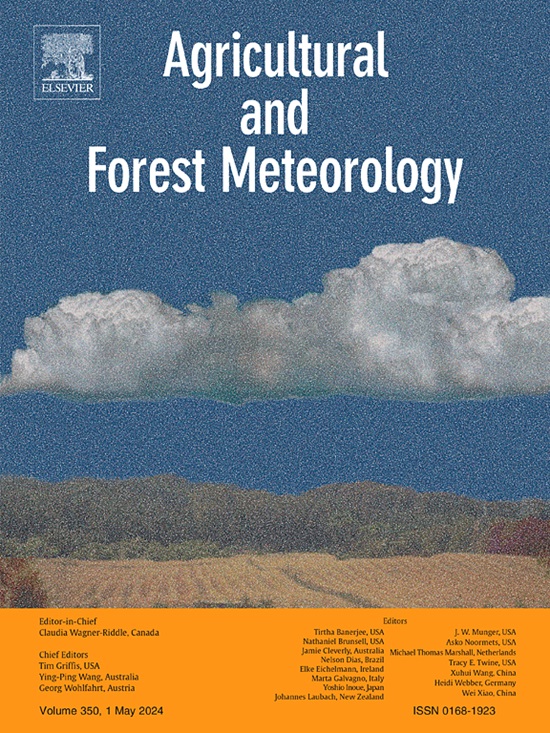No recovery of soil respiration four years after fire and post-fire management in a Nordic boreal forest
IF 5.6
1区 农林科学
Q1 AGRONOMY
引用次数: 0
Abstract
The long-term carbon storage capacity of the boreal forest is under threat from the increasing frequency and intensity of wildfires. In addition to the direct carbon emissions during a fire, the burnt forest often turns into a net carbon emitter after fire, leading to large additional losses of carbon over several years. Understanding how quickly forests recover after a fire is therefore vital to predicting the effects of fire on the forest carbon balance. We present soil respiration and CH4 fluxes, soil chemistry, microclimate and vegetation survey data from the first four years after a wildfire in a Pinus sylvestris forest in Sweden. This is an understudied part of the boreal biome where forest management decisions interact with disturbances to affect forest growth. We analysed how fire severity and post-fire salvage-logging affected soil carbon fluxes. The fire did not affect soil CH4 uptake. However, soil respiration was significantly affected by the presence or absence of living trees after the fire and post-fire forest management. Tree mortality due to the high-severity fire, or the salvage-logging of living trees after low-severity fire, led to immediate and significant decreases in soil respiration. Salvage-logging of dead trees after high-severity fire did not alter soil respiration compared to when the dead trees were left standing. However, it did significantly slow the regrowth of understory vegetation. Our results highlight that the impact of salvage-logging on the soil carbon fluxes depends on fire severity but that logging always slows the natural recovery of vegetation after fire. The soil CO2 fluxes did not show signs of recovery at any of the burnt sites during the first four years since the fire.

求助全文
约1分钟内获得全文
求助全文
来源期刊
CiteScore
10.30
自引率
9.70%
发文量
415
审稿时长
69 days
期刊介绍:
Agricultural and Forest Meteorology is an international journal for the publication of original articles and reviews on the inter-relationship between meteorology, agriculture, forestry, and natural ecosystems. Emphasis is on basic and applied scientific research relevant to practical problems in the field of plant and soil sciences, ecology and biogeochemistry as affected by weather as well as climate variability and change. Theoretical models should be tested against experimental data. Articles must appeal to an international audience. Special issues devoted to single topics are also published.
Typical topics include canopy micrometeorology (e.g. canopy radiation transfer, turbulence near the ground, evapotranspiration, energy balance, fluxes of trace gases), micrometeorological instrumentation (e.g., sensors for trace gases, flux measurement instruments, radiation measurement techniques), aerobiology (e.g. the dispersion of pollen, spores, insects and pesticides), biometeorology (e.g. the effect of weather and climate on plant distribution, crop yield, water-use efficiency, and plant phenology), forest-fire/weather interactions, and feedbacks from vegetation to weather and the climate system.

 求助内容:
求助内容: 应助结果提醒方式:
应助结果提醒方式:


